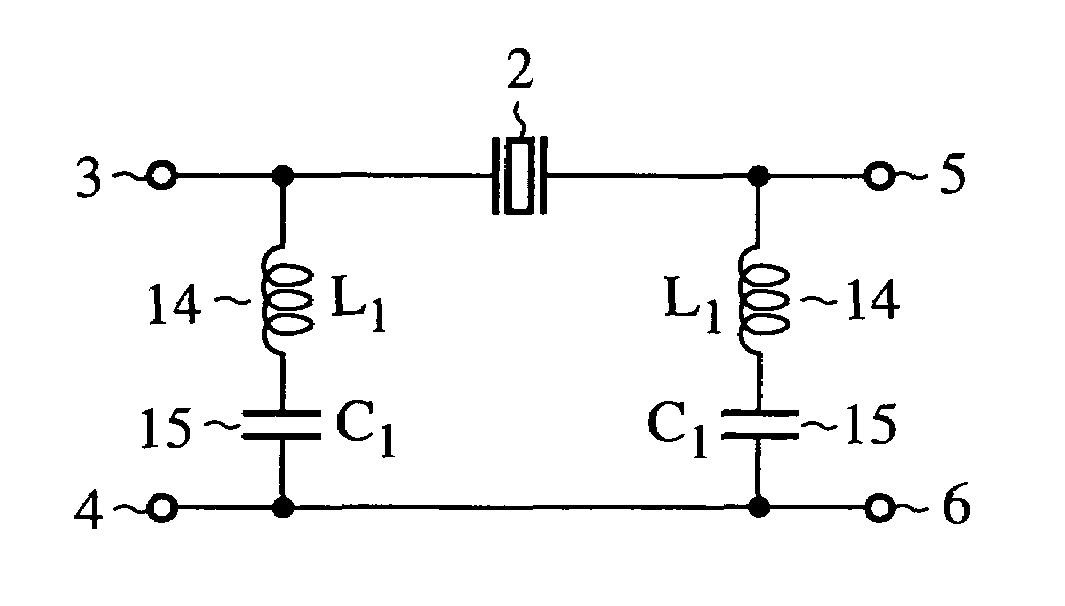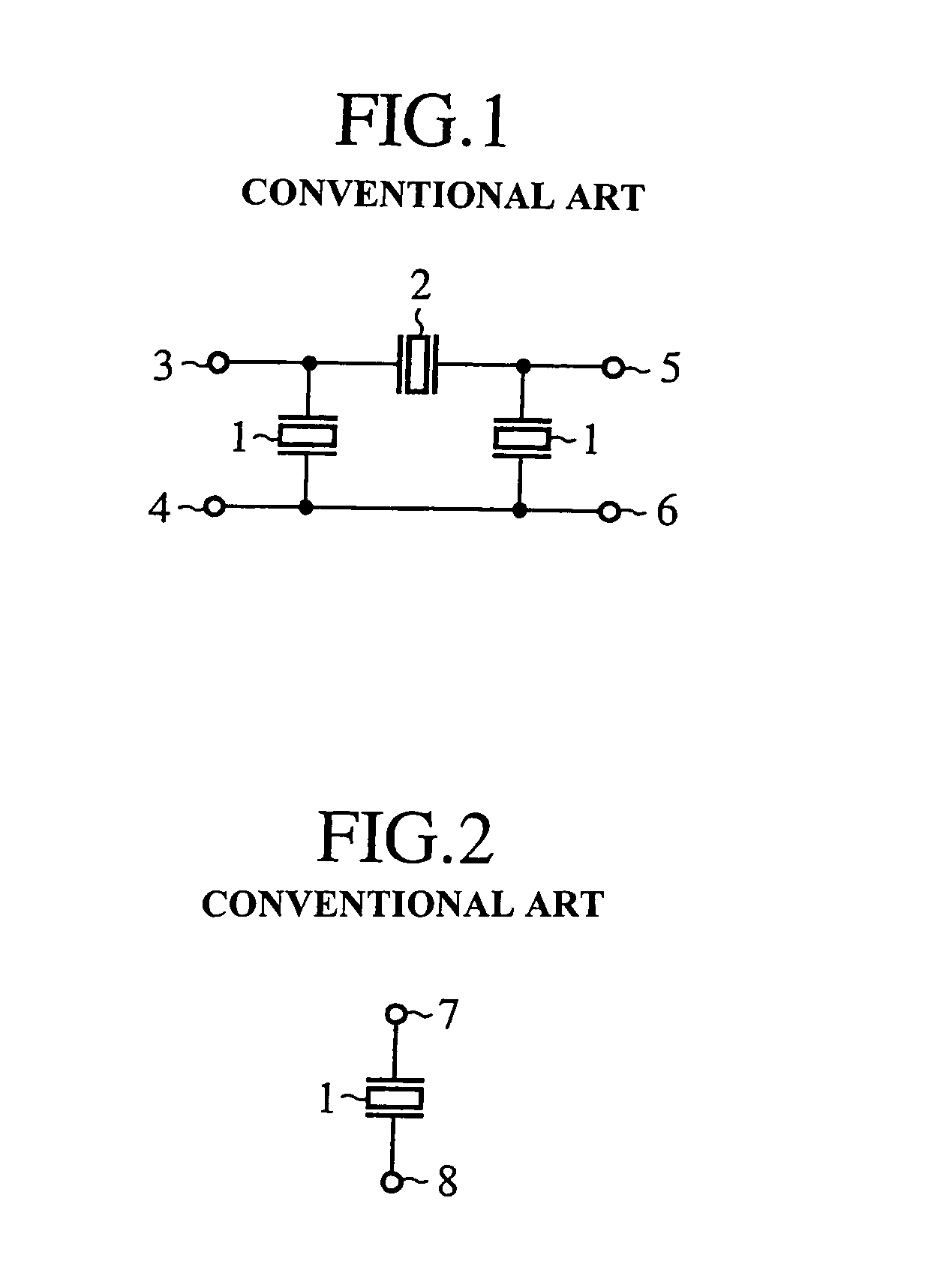Filter circuit with series and parallel elements
a filter circuit and series element technology, applied in the field of filter circuits, can solve the problems of limited difference between the center of the passband of the filter circuitry and the center of the stopband of the filter circuitry that needs large attenuation, and the difference between the center of the pass the center of the stopband of the filter circuitry that needs large attenuation, and achieve the effect of large attenuation
- Summary
- Abstract
- Description
- Claims
- Application Information
AI Technical Summary
Benefits of technology
Problems solved by technology
Method used
Image
Examples
embodiment 1
[0104]FIG. 9 is a block diagram showing filter circuitry according to embodiment 1 of the present invention. In the figure, reference numeral 2 denotes a SAW resonator (i.e., a resonator) having an antiresonance characteristic, the SAW resonator constituting a series element of the filter circuitry, reference numeral 3 denotes an input terminal, reference numeral 4 denotes a ground terminal disposed on an input side of the filter circuitry, reference numeral 5 denotes an output terminal, reference numeral 6 denotes a ground terminal disposed on an output side of the filter circuitry, reference numeral 14 denotes an inductor, and reference numeral 15 denotes a capacitor. Two series circuits each comprised of one inductor 14 and one capacitor 15 are parallel elements of the filter circuitry, and have a π-shaped circuit structure.
[0105]FIG. 10 is a circuit diagram showing an equivalent circuit of the filter circuitry that operates in a frequency range in which the SAW resonator 2 doesn...
embodiment 2
[0118]FIG. 15 is a block diagram showing filter circuitry according to embodiment 2 of the present invention, and FIG. 16 is an explanatory drawing for explaining an operation of the filter circuitry of FIG. 15. In the figure, reference numeral 2a denotes a first SAW resonator, reference numeral 2b denotes a second SAW resonator, reference numeral 27a denotes a pass filter characteristic of the first SAW resonator 2a, reference numeral 27b denotes a pass filter characteristic of the second SAW resonator 2b, and reference numeral 28 denotes a pass filter characteristic of the filter circuitry of FIG. 15.
[0119]The first SAW resonator 2a has a resonance frequency of frs1, an antiresonance frequency of fas1, and a capacitance of C2. The second SAW resonator 2b has a resonance frequency of frs2 an antiresonance frequency of fas2, and a capacitance of C3. The capacitance C2 of the first SAW resonator 2a is nearly equal to the capacitance C3 of the second SAW resonator 2b. The antiresonanc...
embodiment 3
[0125]FIG. 17 is an explanatory drawing for explaining an operation of filter circuitry according to embodiment 3 of the present invention. The filter circuitry that operates as shown in FIG. 17 has the same structure as the filter circuitry of FIG. 15. The inductance of each inductor 14, the capacitance of each capacitor 15, the capacitance C2 of a first SAW resonator 2a, and the capacitance C3 of a second SAW resonator 2b are determined so that a cutoff frequency fc and a frequency fn of an attenuation pole for each section 100a, which are determined by those components' values, become equal to those for any other section, as in the case of FIG. 16. The frequency fn of the attenuation pole is so set as to be lower than the antiresonance frequency fas1 of the first SAW resonator 2a and the antiresonance frequency fas2 of the second SAW resonator 2b.
[0126]Because a frequency difference between the attenuation pole caused by the antiresonance frequency fas1 of the first SAW resonato...
PUM
 Login to View More
Login to View More Abstract
Description
Claims
Application Information
 Login to View More
Login to View More - R&D
- Intellectual Property
- Life Sciences
- Materials
- Tech Scout
- Unparalleled Data Quality
- Higher Quality Content
- 60% Fewer Hallucinations
Browse by: Latest US Patents, China's latest patents, Technical Efficacy Thesaurus, Application Domain, Technology Topic, Popular Technical Reports.
© 2025 PatSnap. All rights reserved.Legal|Privacy policy|Modern Slavery Act Transparency Statement|Sitemap|About US| Contact US: help@patsnap.com



